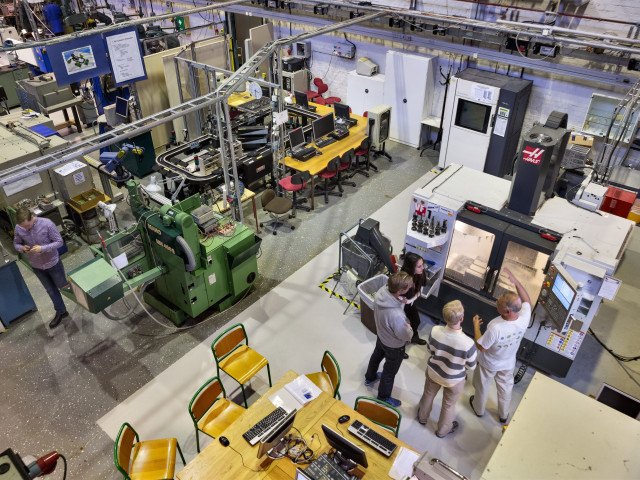- Work physiology
- Theories on acute and long term health effects
- Methods for exposure measurement and risk assessment
- Intervention strategies
HN2010 Evaluation and Measures of the Physical Environment of Work A 7.5 credits
This course has been discontinued.
Decision to discontinue this course:
No information inserted
Information per course offering
Course offerings are missing for current or upcoming semesters.
Course syllabus as PDF
Please note: all information from the Course syllabus is available on this page in an accessible format.
Course syllabus HN2010 (Spring 2019–)Content and learning outcomes
Course contents
Intended learning outcomes
The overall aim is to provide knowledge about the impact on health and performance concerning general ventilation, lighting, visual ergonomics, and electromagnetic radiation.
Students must demonstrate:
- knowledge and understanding regarding how factors within the field of general ventilation, lighting, visual ergonomics, and electromagnetic radiation affect health, security, and performance.
- knowledge and understanding concerning theories about mechanisms linked to the above mentioned factors in causing work-related symtoms and disorders.
- skills and abilities to perform exposure measurements and risk assessments relating to the above mentioned factors.
- skills and abilities to propose work environment improvements concerning the above mentioned factors and to identify facilitators and barriers for implementation.
- abilities to critically evaluate risk assessments and work environment improvements including relevant work environment regulations and scientific literature.
Literature and preparations
Specific prerequisites
Academic first degree, 180 higher education credits/ECTS, in engineering or natural sciences or equivalent education.
Literature
Arbete och Teknik på människan villkor, 2015. Prevent ISBN 9789173651950
Handbok: Bättre Arbetsmiljö, 2017. Prevent. ISBN 9789173652254
Arbetsplatsens ventilation, 2005. Prevent ISBN: 9175228564
Det termiska klimatet på arbetsplatsen. Arbetslivsrapport 2006:2 Arbetslivsinstitutet http://nile.lub.lu.se/arbarch/arb/2006/arb2006_02.pdf
Elektromagnetiska fält i arbetslivet. Arbetslivsinstitutet, http://nile.lub.lu.se/arbarch/ovrigt/2005/info2005_04.pdf
Övrig litteratur tillkommer och meddelas inför respektive seminarie.
Examination and completion
Grading scale
Examination
- ÖVN1 - Exercises, 3.0 credits, grading scale: P, F
- TEN1 - Examination, 3.0 credits, grading scale: A, B, C, D, E, FX, F
- LAB1 - Examination, 1.5 credits, grading scale: P, F
Based on recommendation from KTH’s coordinator for disabilities, the examiner will decide how to adapt an examination for students with documented disability.
The examiner may apply another examination format when re-examining individual students.
If the course is discontinued, students may request to be examined during the following two academic years.
Approved written exam (TEN1, 3 ECTS) Grading scale A-F
Approved lab (LAB1, 1,5 ECTS) Grading scale P/F
Approved exercises (ÖVN1, 3 ECTS) Grading scale P/F
Final grading is based on all examinations.
Examiner
Ethical approach
- All members of a group are responsible for the group's work.
- In any assessment, every student shall honestly disclose any help received and sources used.
- In an oral assessment, every student shall be able to present and answer questions about the entire assignment and solution.